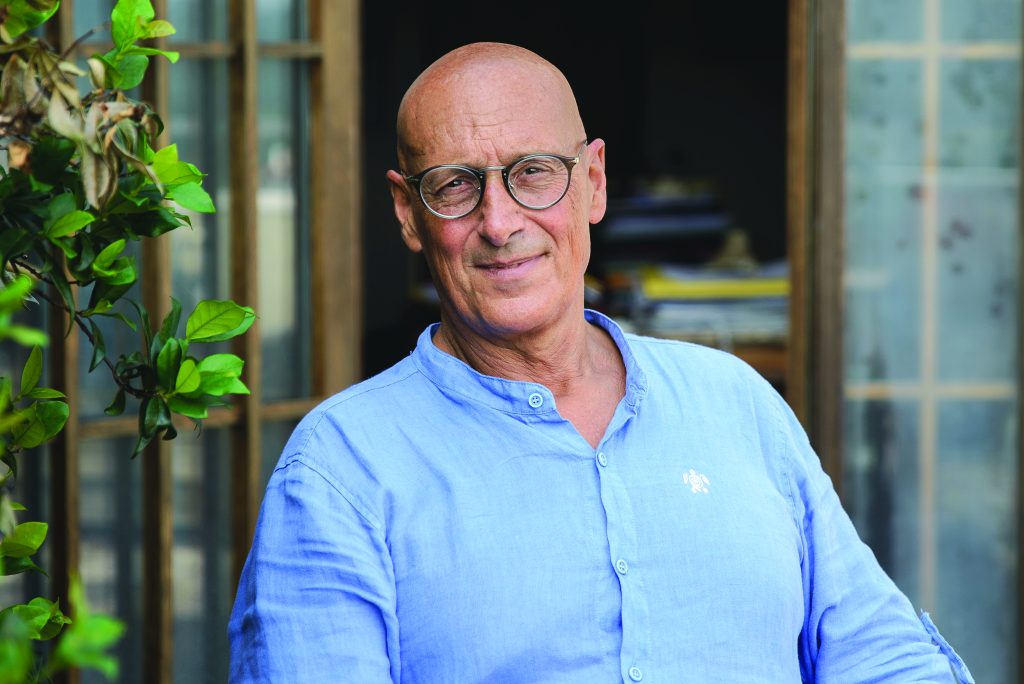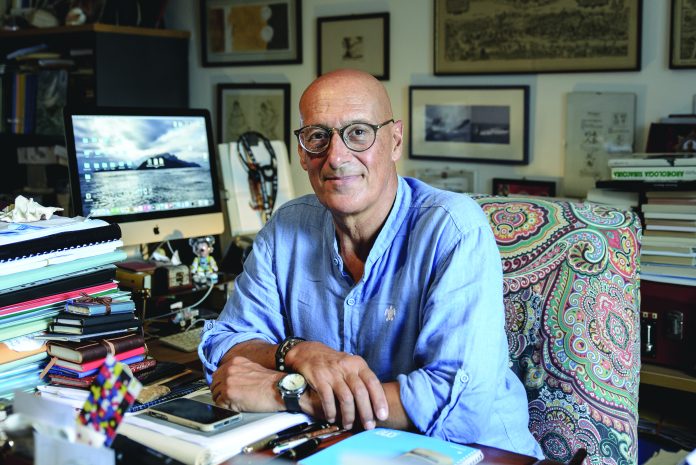interview: Alessandra Ressa
Trieste is deeply rooted in his soul, and it is the source of his daily literary inspiration. From his office in Opicina, piled with books from floor to ceiling, journalist and author Pietro Spirito explains his passionate but sometimes troubled relationship with the city, the perfect place to be, he says, for writers.

Born in Caserta in 1961, Spirito moved to Trieste at the age of three. After reporting for Il Piccolo for over 30 years, Pietro Spirito has recently retired to a lifestyle where he has more control over his time. He now writes for several publications, hosts cultural programs on Italian national television and radio, and continues to write. He is the author of over 20 successful books published by major Italian publishing companies, and the recipient of several literary awards and recognitions. Most of his books are built around the historical and cultural background of Trieste. In addition to that, he has a passion for scuba diving with sharks, caving, and Japanese martial arts. He is proud to say that Trieste shaped him. He is definitely the worthy son of that fading intellectual Trieste that many of us long for.
How would you describe your bond with Trieste?
Trieste is perfect for journalists and writers. It is like stepping into your grandma’s attic. A condensed layering of humanity and natural expression. In such a small place, there is everything—the history of the world, the sea, the caves… it is a microcosm of the world. Of course, it lacks the thrill of great horizons, the deserts, the mountains, the ocean. It concentrates in itself, however, an enormous variety of characters and characteristics of humanity. For a writer, it is like an amusement park.
Is there anything you dislike about the city?
I wish the attitude of “no se pol” (can’t be done) could be eradicated. Triestini seem to be unable to exploit the potential and wealth of the city, and rather prefer to hinder and be divided. Trieste is very fragmented on so many levels, like a broken mirror where the souls reflect in the specks and prevent each other from moving on. I wish Triestini would have the strong will of their neighboring Friulani to roll up their sleeves and do the hard job.

What is your favorite Trieste dish?
I’m very fond of most traditional foods in Trieste. When I’m by the sea, sardoni impanati (breaded and fried sardines) are definitely my favorite. When I’m in the Carso hills, patate in tecia (crusty, partly mashed potatoes fried in a pan), civapcici (small, sausage-like, grilled rolls of minced beef), and lubjanska (similar to a Wiener schnitzel). I don’t particularly care for the traditional Trieste soup, jota.
The stories in many of your books are set in the Fall. Is this your favorite season?
Indeed it is. It offers a unique and wide array of colors, like a color palette, and just the right inclination of light to define the variety and shape of melancholia you find in Trieste, and therefore in my books. Fall announces change, something that is about to finish, where this particular melancholia has its own right to exist and prepare you for whatever will come next. I find Trieste very attractive in the Fall; it has a special light all its own, sad and languid at the same time.
Your new book, set in Trieste, is going to be available in bookstores starting January 2025. Could you give us a foretaste of what it is about?
I am just about to finish it… All I can say is that it is set in Trieste in a very difficult historical period, the 1970s, at a time of great violence and of the politically hot border with Yugoslavia. It is a spy story, with a noir plot that aims to bring back that particular historical moment. The main character is a journalist who works for the secret services.
Are you the main character in the book?
In all of my books, there is something about myself or about what I would have liked to be.
Are any of your books available in English?
Not yet. Some of my books have been translated into Spanish, Slovenian, German, and even Hungarian. One of my novels, Il suo nome quel giorno, should be available in its English version in the United States in Spring 2025.





























